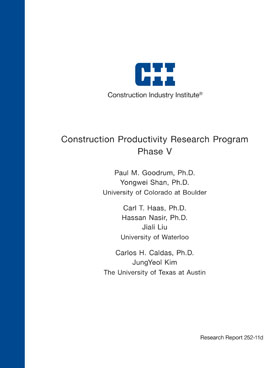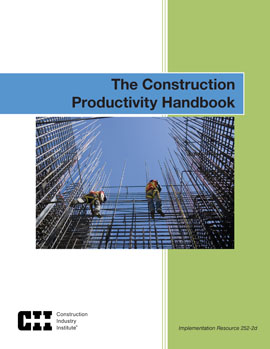
Driving Effective Use of Capital Through Rework Reduction
Central to a program of construction productivity improvement is a focus on craft worker productivity and its relationship to best practice use. Direct work typically amounts to no more than 35-45 percent of a craft worker’s time on the job. Improving craft productivity requires improving direct work time by improving the availability of materials, information, and tools at the workplace.
To help the industry realize these improvements Research Team 252 (RT-252) was tasked with the objective of identifying and validating one or more initiatives, techniques, or methods that, if implemented, would result in a breakthrough improvement in construction productivity and ultimately increase it by 50 percent.
To accomplish this, RT-252 implemented a five-phase program over six years that annually introduces innovations through a research sequence comprised of innovation workshops, field trials, analysis, and implementation tool delivery. Each phase had three parts:
Analyzing CII Benchmarking & Metrics (BM&M) data to identify potential productivity best practices
Exploring opportunities for productivity improvement through craft information, technology support for labor, work packaging/organization, and human behavior
Soliciting innovation input from workshop attendees and team members
RT-252’s strategy for improving craft performance focused on the following:
Increasing the time spent by craft workers on direct work
Reducing the number of work hours required to complete one unit of work
Reducing the amount of rework occurring on projects


